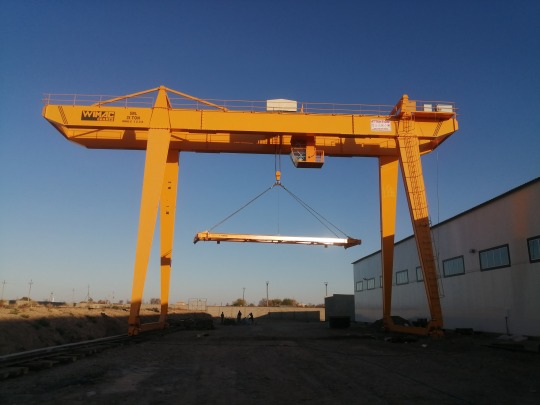#Industrial Machinery and Supplies
Explore tagged Tumblr posts
Text
#B2B#Industrial Machinery and Supplies#Industrial Supplies#Industrial Machinery#safety relief valve supplier#Safety Valve
0 notes
Text

Tracking Rollers – Precision Web Alignment for Converting Machines
At Krishna Engineering Works, our Tracking Rollers ensure accurate web alignment and smooth material movement in printing, lamination, slitting and winding machines. Designed for high precision and durability, they prevent slippage, reduce material wastage, and require minimal maintenance. With a robust build and flexible installation, our rollers enhance efficiency across various industrial applications.
#krishnaengineeringworks#machine#manufacturer#Export#Supply#Tracking Roller#Web Guiding#Web Aligner System#Advance Machinery#industry#industrial
2 notes
·
View notes
Text
Hard Anodized Aluminium Rolls stand out as a top choice for industries requiring high durability, corrosion resistance, and excellent performance. At Conpaptex Equipments, we specialize in manufacturing premium-quality industrial rolls designed to meet the diverse needs of packaging, textile, paper, plastic, and other heavy industries.
#conpaptex#conpaptex equipments#export#supply#aluminium rolls#rubber roller#industrial roller#machinery and equipments
2 notes
·
View notes
Text
Best Woodworking Machines in India
Best Woodworking Machines in India When it comes to woodworking, having the right tools and machinery is essential. Whether you are a professional woodworker or a DIY enthusiast, investing in high-quality equipment can make all the difference in your projects. And when it comes to finding the best woodworking machines in India, look no further than Garnet India.
https://www.garnetindia.com/the-best-woodworking-machines-in-india/
#best woodworking machines in india#Woodworking machine industry in India#Woodworking machinery#India woodworking industry#Woodworking Machinery Manufacturers in India#Quality woodworking equipment India#Woodworking equipment#Indian woodworking machinery#Garnet woodworking tools#Top woodworking machines India#Garnet woodworking supplies#Premium woodworking machines#Best woodworking tools India#Advanced woodworking machines#Reliable woodworking machines#High-quality woodworking machines#Affordable woodworking machines
0 notes
Text





🔥 When orders explode! Quality is like steel, delivery is like wind 🔥
——Your hydraulic power expert, the trusted choice worldwide——
📦 ** Massive orders, trusted globally**
The production line has been fully opened for 30 consecutive days, delivering over 500000 hydraulic rubber pipes to the mining, engineering, and shipbuilding industries! From the pole to the equator, our pipeline is as stable as Mount Tai in every pressure peak.
⚙️ ** Military grade quality, conquering extremes**
✅ 3-layer steel wire winding, explosion pressure exceeding twice the national standard
✅ 150 hour pulse test, fearless of challenges at -40 ℃~120 ℃
✅ Double protection of German TUV certification and ISO9001
🚚 ** Intelligent warehousing, lightning response**
The Wanping three-dimensional warehouse has sufficient stock, a 48 hour fast delivery system, and an exclusive green channel for urgent orders, ensuring that your equipment never stops working!
0 notes
Text
Sugar Industry Equipment and Component Suppliers

The sugar industry is a vital sector in many economies, producing one of the most consumed commodities worldwide. Its efficiency relies heavily on sophisticated machinery and well-engineered components. Suppliers of sugar mill machinery parts play a crucial role in ensuring the seamless operation of sugar manufacturing plants, providing high-quality, durable, and reliable parts for various stages of production.
Core Components in the Sugar Industry
Sugar production involves a series of processes, including extraction, clarification, evaporation, crystallization, and packaging. Each stage requires specific machinery parts, such as:
Cane Preparation and Crushing Equipment: Key components include shredders, crushers, knives, and mills. These parts are critical for extracting juice efficiently from sugarcane.
Boilers and Steam Generators: These systems require reliable tubes, drums, and fittings for energy generation and heat transfer.
Clarifiers and Filters: Essential for juice purification, these systems rely on precision-engineered screens, filter plates, and centrifuges.
Evaporators and Crystallizers: The core of sugar production, these units need heat exchangers, vessels, and agitators.
Conveyors and Material Handling Systems: Components such as chains, belts, rollers, and gearboxes are integral for moving raw materials and finished products efficiently.
Maintenance and Support Components: Bearings, couplings, seals, and lubrication systems ensure machinery operates smoothly and reduces downtime.
Why Quality Components Matter
The sugar industry operates under stringent timeframes, especially during harvesting seasons. Any disruption in machinery can lead to significant losses. Suppliers must provide parts that meet international quality standards, ensuring durability and efficiency under harsh operating conditions. High-quality components also minimize energy consumption, reduce maintenance costs, and ensure compliance with environmental regulations.
Top Suppliers of Sugar Mill Machinery Parts
Several companies specialize in manufacturing and supplying sugar mill machinery parts, catering to both domestic and international markets. These suppliers often offer:
Custom Solutions: Tailored components to fit unique machinery specifications.
After-Sales Services: Installation support, routine maintenance, and spare part availability.
Advanced Technologies: Integration of automation and IoT for smart operation and monitoring.
Choosing the Right Supplier
When selecting a supplier, consider factors such as their experience in the industry, reputation for quality, adherence to deadlines, and ability to offer competitive pricing. A reliable supplier ensures consistent performance of your machinery and enhances overall productivity.
Conclusion
The sugar industry's success hinges on the efficiency of its machinery and components. Collaborating with reputable suppliers of sugar mill machinery parts guarantees operational excellence, reduced downtime, and long-term profitability. By investing in high-quality components, sugar manufacturers can ensure they meet production demands while optimizing costs and maintaining product quality.
#Companies Supplying Sugar Mill Machinery Parts#Sugar Industry Component Suppliers#Sugar Industry Components Suppliers#sugar Mill Machinery Components#Sugar Plant Machinery#Sugar Industry Instruments Manufacturers Suppliers Exporters
1 note
·
View note
Text




Galleryyuhself - A bit of history about your product helps make clients more confident. Alternative Supplies Limited provides that in spades.
#galleryyuhself/Alternative Supplies Limited#galleryyuhself/industrial supplies#galleryyuhself/heavy machinery#tumblr/industrial supplies#tumblr/industrial#trinidad and tobago#alternative supplies limited
0 notes
Text

Quality Filters, Bearings, and Electricals | TGP India - Your Trusted Industrial Solutions Provide
Explore a wide range of high-quality filters, bearings, and electrical components at TGP India. Our industrial solutions ensure reliability and efficiency. Find the right products for your needs.
#Electrical Supplies#TGP India#Quality Industrial Products#Bearings for Machinery#Industrial Filters
0 notes
Text

Despite The Recent Initiative By The Australian Meat Industry Council
The Australian Meat Industry Council introducing an incentive program for Australian farm workers for enhancing the growth of the food industry. These incentives include sign-up bonuses, flexible working patterns, and extended leave which attract more workers. Visit our complete blog to know the reason for this incentive program here.
#australian meat industry council#ausveg#Australian Government#farm input costs#food industry#food supply chain alliance#supply chain#dairy shed#Entegra Signature Structures#farm machinery#Dairy Barn#Farm Workers in Australia
0 notes
Text
Gantry Cranes: A Comprehensive Overview of their Manufacturing, Utility in Dry Ports
an article covering gantry cranes utility in Dry ports
Welcome to our latest discourse, where we shift our focus to the often undervalued yet indispensable element of the dry port sector: the Gantry Crane. This remarkable machinery, though not a staple in everyday discussions, is significantly utilized in dry ports, enriching productivity and streamlining operations. Join us as we explore the structure, operational aspects, variations, and vital…

View On WordPress
#cargo loading#container management#container unloading#dry port sector#freight forwarding#gantry cranes#heavy machinery#industrial cranes#intermodal transportation#logistics#manufacturing#port machinery#shipment#storage facility#supply chain#transport equipment#transport hub operations
0 notes
Text
#Pressure Safety Valves#Switching safety valve#Safety Valve#Safety Valve China#Pressure Safety Valve#Pressure Safety Valve Manufacturer#Pressure Safety Valve Supplier#B2B#Business services And Consultants#Industrial Machinery And Supplies#Logistics And Transportation#Industrial Supplies#Construction
0 notes
Text
The Liner Rewinder Machine is an essential part of modern industrial production, whether you’re in packaging, textile manufacturing, or paper processing.
#krishnaengineeringworks#machinery#machine#industry#linerrewindermachine#export#supply#machinemanufacturer
2 notes
·
View notes
Text
A Rewinder Unit is a specialized machine designed to rewind material, such as paper, films, textiles, or other roll-based materials, from one roll to another. Conpaptex manufactures high-quality Rewinder Units that ensure precision, durability, and efficiency, catering to various industrial needs.
#conpaptex#machine#manufacturers#machinemanufacturer#industry#export#supply#rewinder unit#winderewinder#machinery#packaging
1 note
·
View note
Text
Best Woodworking Machines in India
Best Woodworking Machines in India When it comes to woodworking, having the right tools and machinery is essential. Whether you are a professional woodworker or a DIY enthusiast, investing in high-quality equipment can make all the difference in your projects. And when it comes to finding the best woodworking machines in India, look no further than Garnet India.
best woodworking machines in india, Woodworking machine industry in India, Woodworking machinery, India woodworking industry, Woodworking Machinery Manufacturers in India, Quality woodworking equipment India, Woodworking equipment, Indian woodworking machinery, Garnet woodworking tools, Top woodworking machines India, Garnet woodworking supplies, Premium woodworking machines, Best woodworking tools India, Advanced woodworking machines, Reliable woodworking machines, High-quality woodworking machines, Affordable woodworking machines
#best woodworking machines in india#Woodworking machine industry in India#Woodworking machinery#India woodworking industry#Woodworking Machinery Manufacturers in India#Quality woodworking equipment India#Woodworking equipment#Indian woodworking machinery#Garnet woodworking tools#Top woodworking machines India#Garnet woodworking supplies#Premium woodworking machines#Best woodworking tools India#Advanced woodworking machines#Reliable woodworking machines#High-quality woodworking machines#Affordable woodworking machines
0 notes
Text
The vast majority (99%) of the 281,000 metric tonnes of carbon dioxide (CO2 equivalent) estimated to have been generated in the first 60 days following the 7 October Hamas attack can be attributed to Israel’s aerial bombardment and ground invasion of Gaza, according to a first-of-its-kind analysis by researchers in the UK and US. According to the study, which is based on only a handful of carbon-intensive activities and is therefore probably a significant underestimate, the climate cost of the first 60 days of Israel’s military response was equivalent to burning at least 150,000 tonnes of coal. The analysis, which is yet to be peer reviewed, includes CO2 from aircraft missions, tanks and fuel from other vehicles, as well as emissions generated by making and exploding the bombs, artillery and rockets. It does not include other planet-warming gases such as methane. Almost half the total CO2 emissions were down to US cargo planes flying military supplies to Israel. Hamas rockets fired into Israel during the same period generated about 713 tonnes of CO2, which is equivalent to approximately 300 tonnes of coal – underscoring the asymmetry of each side’s war machinery.
[...]
David Boyd, the UN special rapporteur for human rights and the environment, said: “This research helps us understand the immense magnitude of military emissions – from preparing for war, carrying out war and rebuilding after war. Armed conflict pushes humanity even closer to the precipice of climate catastrophe, and is an idiotic way to spend our shrinking carbon budget.”
[...]
Even without comprehensive data, one recent study found that militaries account for almost 5.5% of global greenhouse gas emissions annually – more than the aviation and shipping industries combined. This makes the global military carbon footprint – even without factoring in conflict-related emission spikes – the fourth largest after only the US, China and India.
1K notes
·
View notes